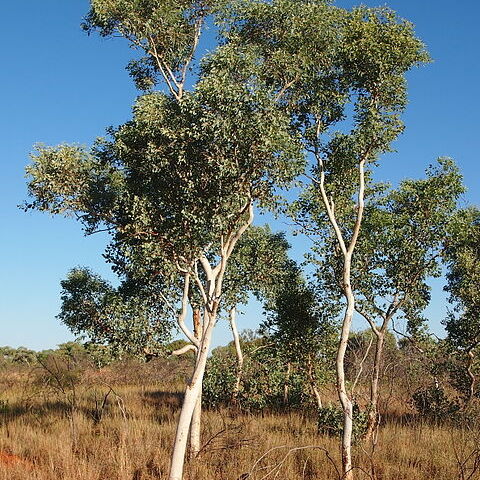Tree to 20 m high, more or less deciduous. Bark pink-red to white or cream. Juvenile leaves alternate, ovate to suborbicular, green, discolorous. Adult leaves alternate, narrowly to broadly lanceolate or ovate, acuminate, thin; lamina 7–21 cm long, 2–5 cm wide, green, concolorous; lateral veins conspicuous, at 30°–60°; intramarginal vein up to 2 mm from margin; petiole flattened or angular, 10–33 mm long. Umbels 7-flowered; peduncle terete or angular, 4–14 mm long; pedicels absent or angular, to 7 mm long. Buds globular to ovoid; operculum hemispherical, apiculate, or low conical, 3–5 mm long, 4–7 mm wide; hypanthium hemispherical, 3–5 mm long, 4–7 mm wide. Fruits hemispherical to obconical, 4–7 mm long, 5–8 mm wide; disc moderately broad, level or convex; valves 3 or 4, exserted.


